Zen Bedroom Makeover: Japanese Style Headboards Explained
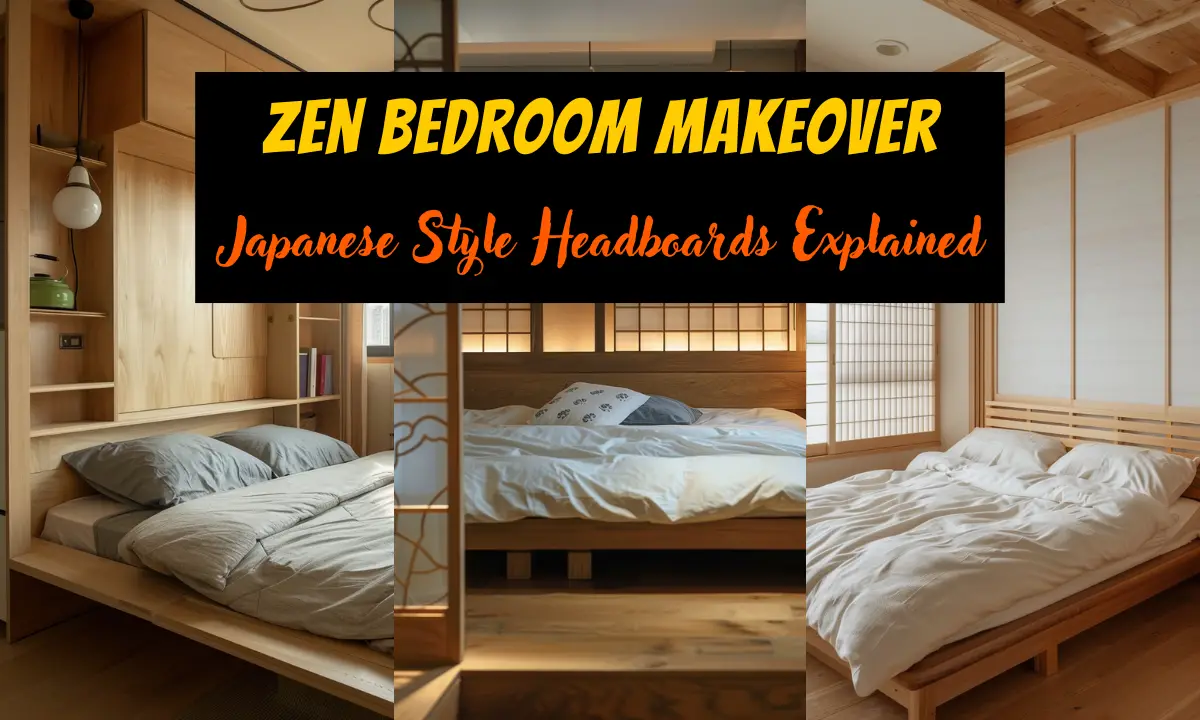
Zen philosophy transforms interior design, emphasizing simplicity and harmony.
Its principles shape living spaces, creating serene environments that promote mindfulness.
Japanese culture reveres the bedroom as more than a sleeping area—it’s a personal sanctuary.
This sacred space fosters relaxation, reflection, and rejuvenation.
Japanese-style headboards embody these ideals, blending form and function to enhance bedroom aesthetics.
They serve as focal points, anchoring the room’s design while promoting a sense of calm.
By understanding these elements, you can craft a tranquil retreat that nurtures both body and spirit.
Understanding Japanese Style Headboards
Japanese-style headboards represent a unique fusion of form and function in bedroom design.
They embody the principles of Zen philosophy, bringing a sense of calm and simplicity to sleeping spaces.
These distinctive elements serve as both practical bedroom features and artistic statements, often becoming the focal point of room decor.
Definition and Key Characteristics
Japanese-style headboards blend aesthetics with functionality, embodying the essence of Zen design.
These unique bedroom elements typically feature clean lines, natural materials, and minimalist patterns.
Their key characteristics include:
- Low profiles
- Simple geometric shapes
- Focus on negative space
- Use of natural materials like wood, bamboo, or rice paper
- Subtle textures and patterns
Historical Context and Evolution
Historically, Japanese headboards evolved from floor-level sleeping arrangements.
Traditional Japanese homes used tatami mats and futons instead of raised beds.
As Western influence grew, the concept of headboards adapted to suit Japanese aesthetic sensibilities.
Early versions often incorporated shoji screens, providing both privacy and light filtration.
Over time, designers began crafting headboards from various woods native to Japan. Modern iterations may include elements like:
- Built-in storage
- Integrated lighting
- Fusion of traditional and contemporary designs
The evolution of Japanese-style headboards reflects broader cultural shifts in Japan.
They represent a bridge between traditional floor-sleeping customs and Western-style beds.
Today, these headboards serve as striking focal points in bedrooms worldwide, offering a touch of Eastern tranquility to diverse interior styles.
Types of Japanese Style Headboards
Japanese-style headboards come in various designs, each offering a unique blend of aesthetics and functionality.
These diverse options cater to different tastes while maintaining the core principles of Japanese design.
1. Shoji Screen Headboard
Shoji screen headboards mimic traditional Japanese room dividers.
They feature translucent paper or fabric panels set in wooden frames.
These headboards diffuse light softly, creating a warm glow in the bedroom.
Their sliding panels often provide hidden storage or adjustable designs.
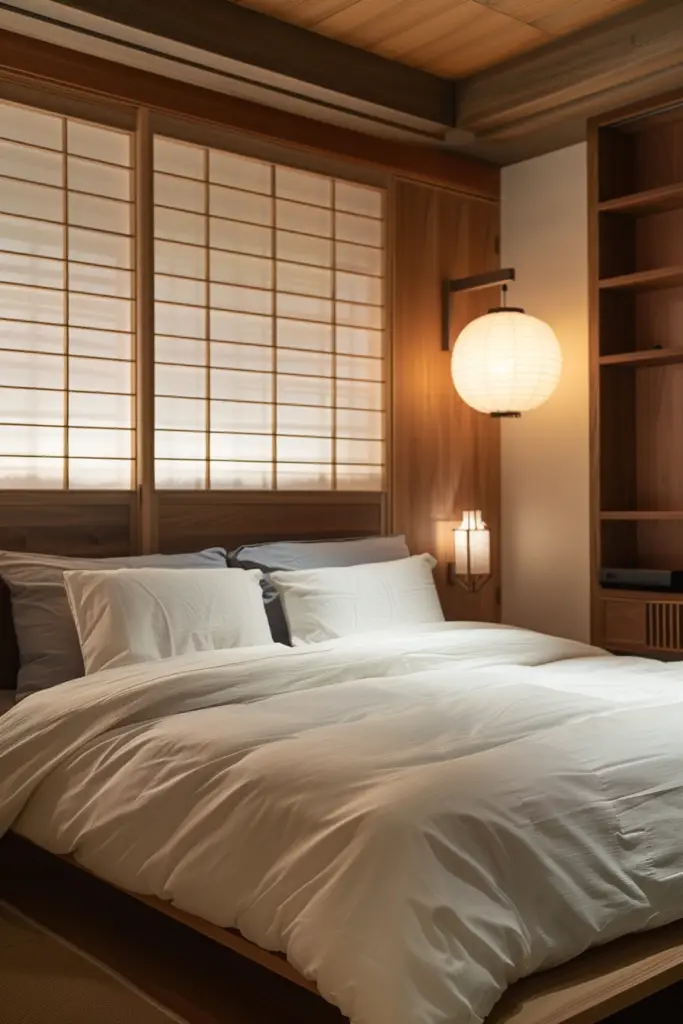
2. Tatami Mat Headboard
Tatami mat headboards incorporate the texture and look of traditional Japanese floor coverings.
They often use woven rush grass or synthetic alternatives.
These headboards bring a natural, earthy element to the bedroom.
Some designs feature removable panels for easy cleaning or replacement.
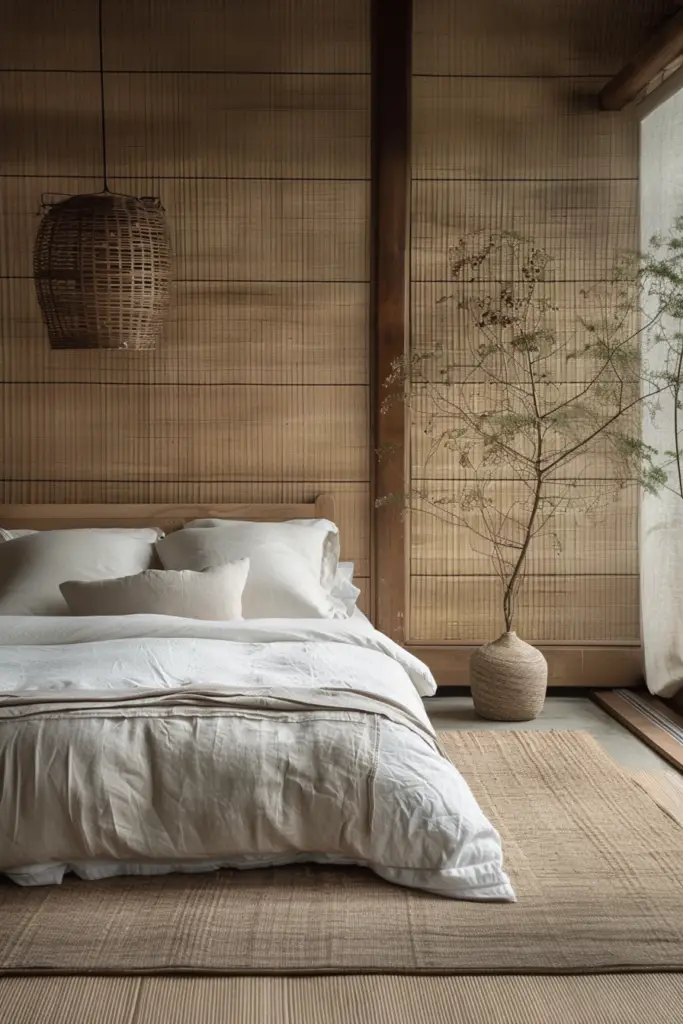
3. Minimalist Wooden Frame Headboard
Wooden frame headboards embody simplicity and natural beauty.
They typically showcase clean lines and smooth finishes.
These designs often use Japanese woods like hinoki cypress or cedar.
Some incorporate geometric patterns or slatted designs for added visual interest.
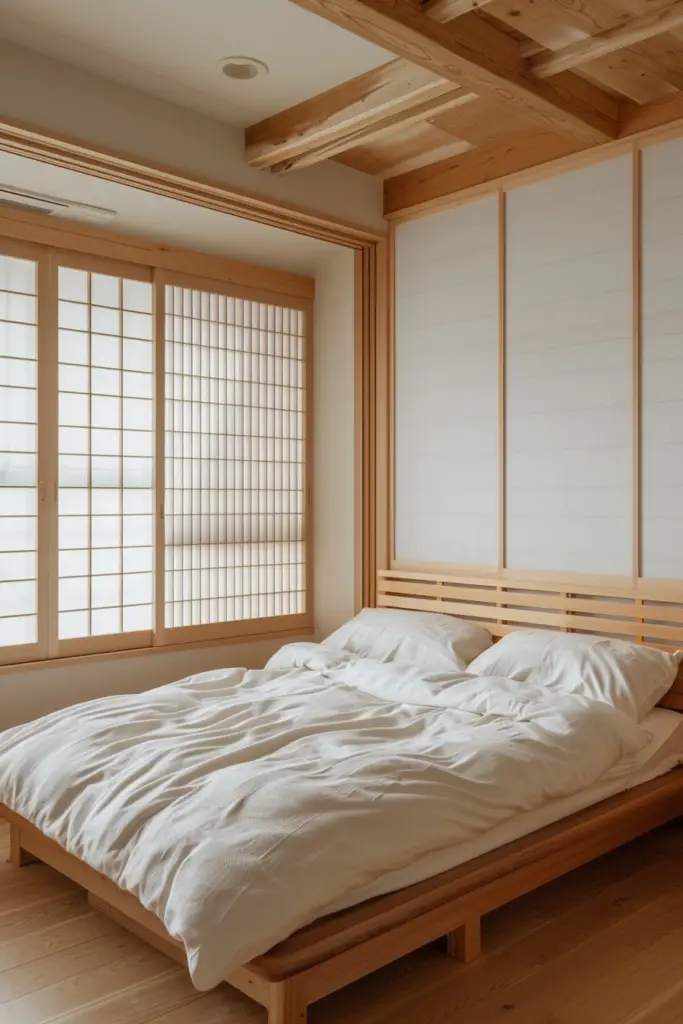
4. Bamboo and Rattan Headboard
Bamboo and rattan headboards offer a lightweight, eco-friendly choice.
They bring a tropical flair to Japanese-inspired bedrooms.
These materials can be woven into intricate patterns or left in their natural state.
Many designs feature a mix of bamboo poles and woven rattan panels.
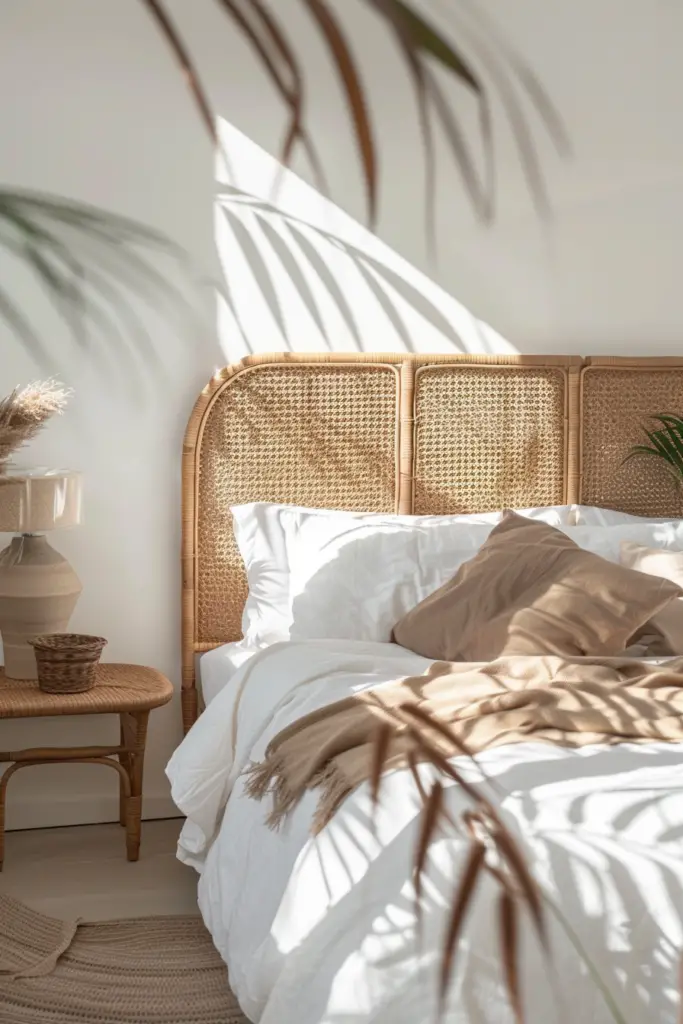
Incorporating Japanese Style Headboards in Various Bedroom Designs
Japanese-style headboards adapt well to diverse interior design schemes.
Their versatility allows them to enhance different bedroom styles while maintaining their unique aesthetic.
1. Traditional Japanese Rooms
In traditional settings, low-profile tatami or shoji-inspired headboard complement futon bed.
Natural wood finishes harmonize with bamboo flooring and paper lanterns.
Sliding panel designs double as room dividers, maximizing space utility.
Subtle patterns on headboards echo motifs found in kimono fabrics or ukiyo-e prints.
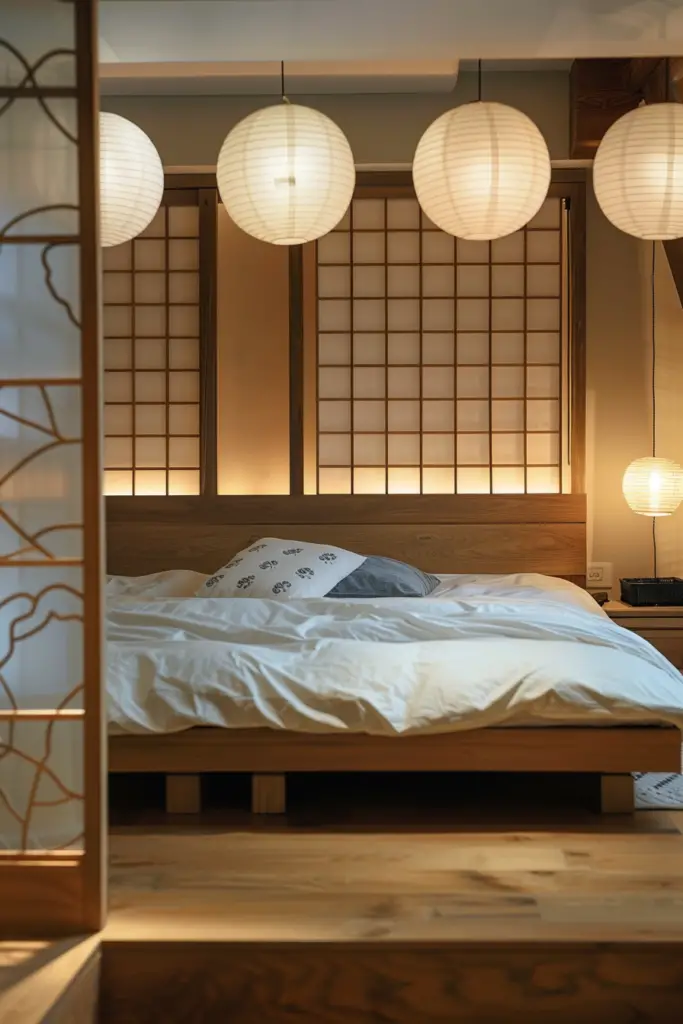
2. Modern Minimalist Bedrooms
Sleek wooden frame headboards with clean lines suit modern minimalist spaces.
Monochromatic color schemes highlight the headboard’s geometric shapes.
Integrated LED lighting adds a contemporary touch to shoji-inspired designs.
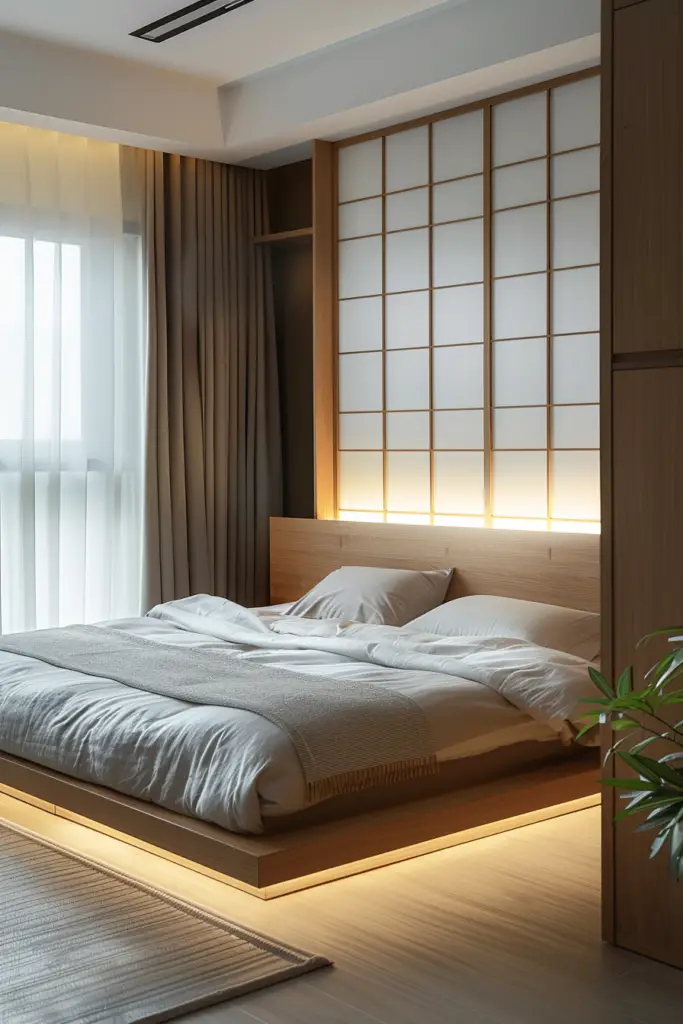
3. Fusion of Eastern and Western Styles
Painted headboards featuring Japanese art bridge Eastern and Western aesthetics.
Bamboo or rattan designs add texture to otherwise stark contemporary rooms.
Western-style beds topped with low Japanese headboards create an intriguing visual contrast.
Mixing materials like wood and metal brings an industrial edge to traditional Japanese elements.
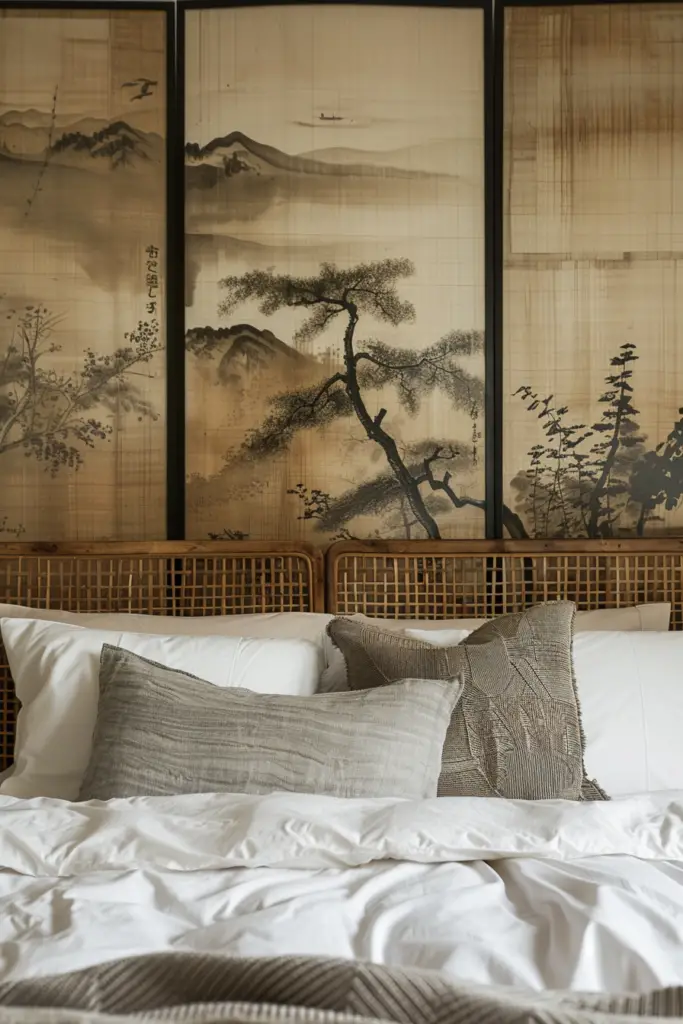
4. Small Space Solutions
Compact apartments benefit from headboards with built-in storage compartments.
Foldable or removable headboard panels allow for flexible room arrangements.
Wall decals mimicking Japanese headboard designs offer a space-saving alternative.
Multi-functional headboards that transform into desks or shelves maximize limited square space.
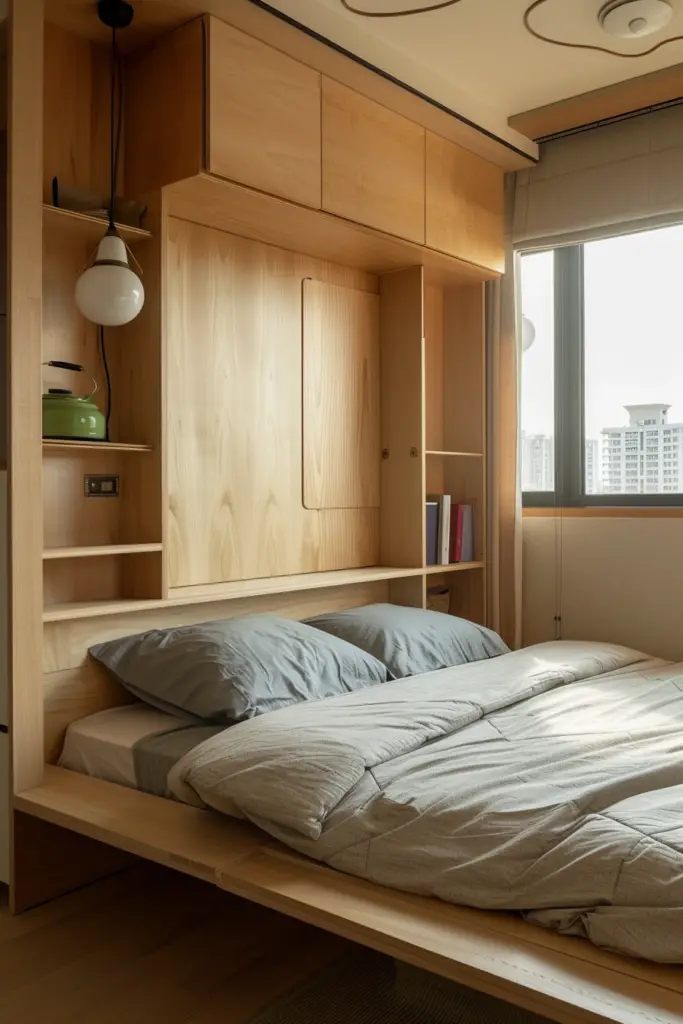
Conclusion
Japanese-style headboards merge beauty with function, transforming bedrooms into calm retreats.
They adapt to various design styles, offering both aesthetic appeal and practical benefits.
These headboards embody Zen principles, promoting relaxation and mindfulness.
By choosing a Japanese-style headboard, you invite tranquility into your daily life.
This simple change can significantly enhance your sleeping space, creating a harmonious environment that nurtures well-being.
Embrace this design approach to craft a bedroom that’s both visually striking and deeply comforting.
- 16 Funky Living Room Ideas to Bring Colors, Fun & Personality to Your Space - November 9, 2025
- 12 Small Bathroom Ideas on a Budget That Make Your Space Look Bigger & Stylish - November 6, 2025
- 20 Modern Boho Living Room Ideas That Are Cozy & Absolutely Stunning - November 2, 2025
